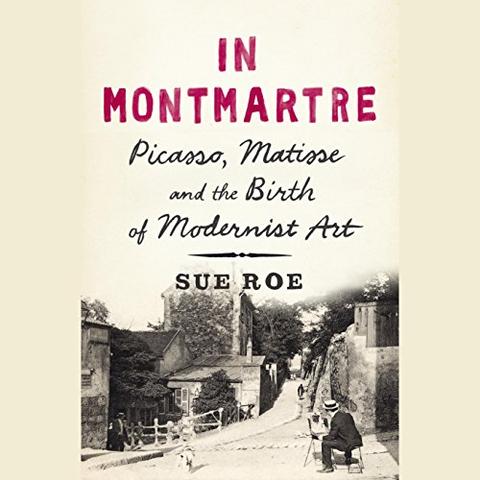The decade of 1900 – 1910 was a pivotal moment in art history, as modernism began to take shape amidst societal upheaval and cultural transformation.
When I opened Sue Roe’s “In Montmartre: Picasso, Matisse and the Birth of Modernist Art”, I embarked on a unforgettable journey through the vibrant and revolutionary art scene of early 20th century Paris. Focusing on the groundbreaking works of Pablo Picasso and Henri Matisse, Sue Roe skillfully intertwines the artists’ personal lives with their creative processes, providing a rich and immersive understanding of their masterpieces.
Sue Roe is masterful storytelling, offering a seat at the table of artistic innovation and impassioned discourse. I felt effortlessly transported back to the bustling café tables of early 20th century Montmartre. I heard the animated discussions among artists, felt the creative energy pulsating through the air, and witnessed the birth of groundbreaking ideas.
Between 1900 and 1910, Montmartre was the home and workplace of several celebrated artists, including Pablo Picasso, Henri Matisse, Amedeo Modigliani, Maurice Utrillo, André Derain, and many others. Sue Roe brings to life the bohemian atmosphere of Montmartre, where artistic experimentation and collaboration flourished. The book beautifully captures the essence of a pivotal moment in art history, as modernism began to take shape amidst societal upheaval and cultural transformation.
In Montmartre: Picasso, Matisse and the Birth of Modernist Art by Sue Roe“You must forget all your theories, all your ideas before the subject. What part of these is really your own will be expressed in your expression of the emotion awakened in you by the subject.”
Henri Matisse
“In Montmartre” portrays a rich tapestry of characters who contributed to the birth of modernist art. André Derain’s tall, lanky figure and his diverse outfits reflect the colourful nuances of his personality, from dandyish English tweeds to thick woolen sweaters. Maurice de Vlaminck cuts a striking figure with his powerful physique, blue eyes, flaming red hair, and a painted wooden necktie.
Pablo Picasso and Georges Braque stand out with their shared fascination with Wilbur Wright and flight, experimenting with paper sculptures as “flying machines”. Their attire, including replicas of Wright’s peaked green cap and cloche hats from Le Havre, coupled with burnt cork sideburns and false moustaches, highlights their playful and inventive spirits. The detailed depiction of their attire underscores the significance of costumes as a reflection of artistic expression and identity.
Paul Cézanne’s enigmatic request that a sitter pose “like an apple” so he could depict “a head like a door” offers a compelling insight into his artistic process. It hints at his profound contemplation on the representation of his subjects, delving beyond the visible exterior to find the essence and depth within.
“Genius is the ability to renew one’s emotions in daily experience.”
Paul Cezanne
Sue Roe writes eloquently of Fernande Olivier a French artist and model renowned for her role as the muse and first love of Pablo Picasso. Fernande’s influence as a source of inspiration for Picasso’s work is intricately woven into the tapestry of artistic history, enriching my understanding of the artist’s creative process and personal life.
The interconnectedness of these artists, their shared experiences, and the fusion of ideas and styles are beautifully captured in this book, akin to the communal dance of the Catalan sardana that Picasso described as “a communion of souls”. In Sue Roe’s In Montmartre, every step of this artistic journey is meticulously counted, portraying a rich tapestry where individuals from diverse backgrounds, rich and poor, young and old, merge their talents, ideas, and eccentricities to shape the course of modernist art.
My Takeaways
- Creativity flourishes within a compassionate community where individuals can collaborate, inspire each other, and share diverse perspectives. In such an environment, ideas are nurtured, feedback is constructive, and innovation thrives.
- The collective energy and support within a creative community can spark new ideas, push boundaries, and encourage experimentation, leading to enhanced creativity among its members.
- Creative endeavors are built on the contributions of those who came before. Each generation passes down their creativity to the next, shaping and inspiring new ideas and innovations.
- Artistic endeavors require dedication and perseverance. Often, the fruits of our labours may not be visible until a significant amount of time has passed.
- Artists serve as a source of motivation and guidance, pushing us to explore new horizons and express authenticity in our personal journeys. After all, we are all artists!
“Inspiration exists, but it has to find you working.”
Pablo Picasso
#InMontmartrePicasso #Matisse #ModernistArt #Modigliani #Picasso #SueRoe

